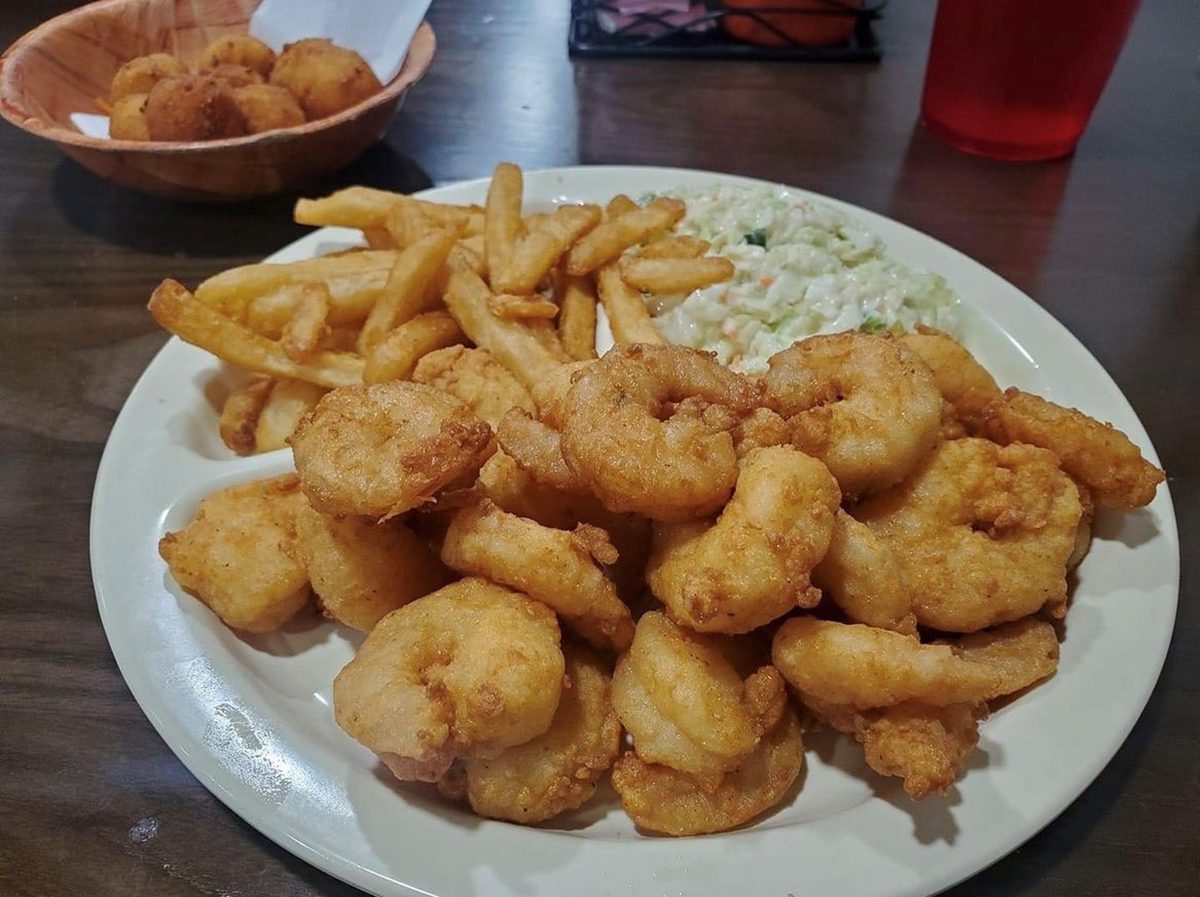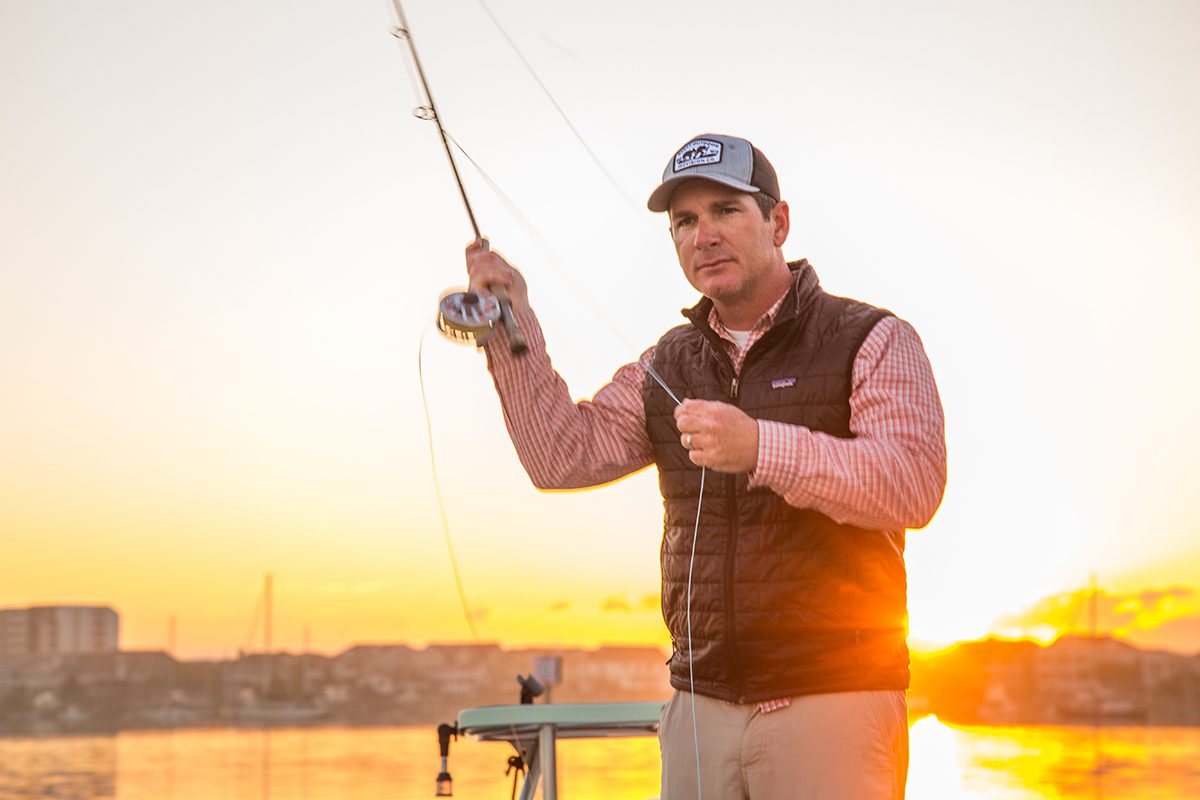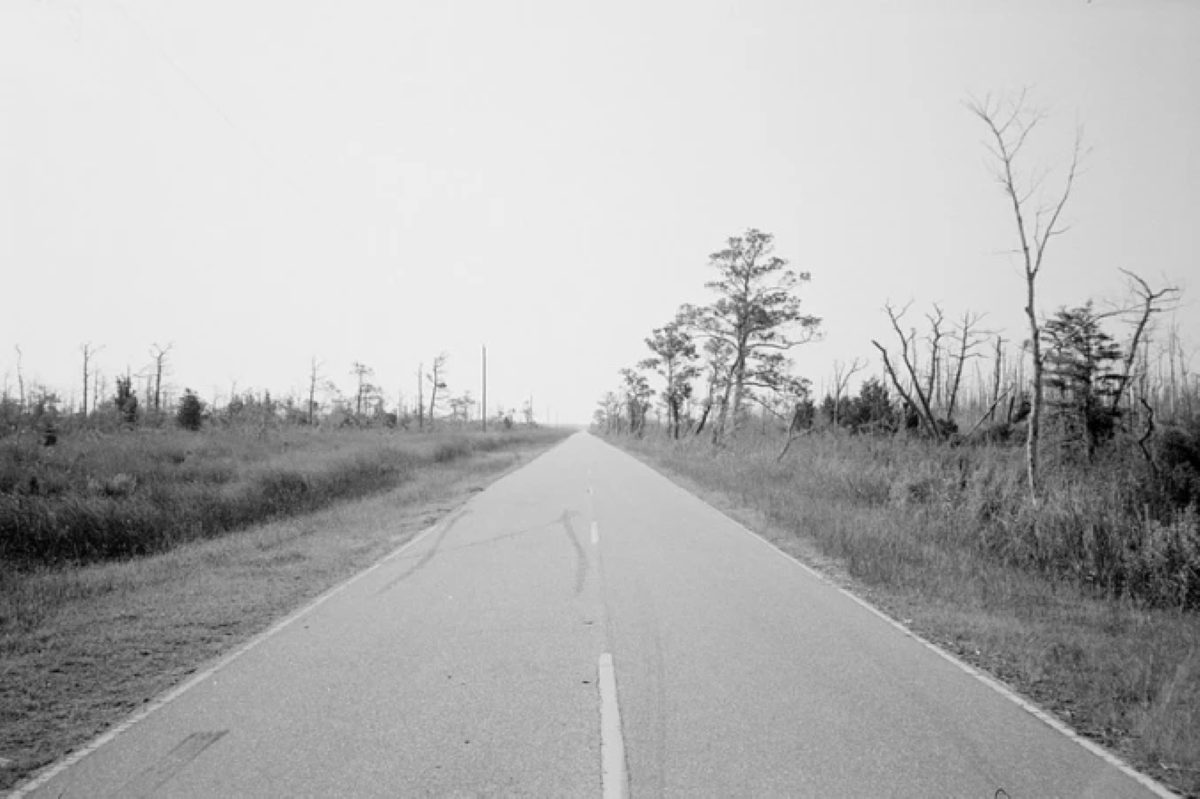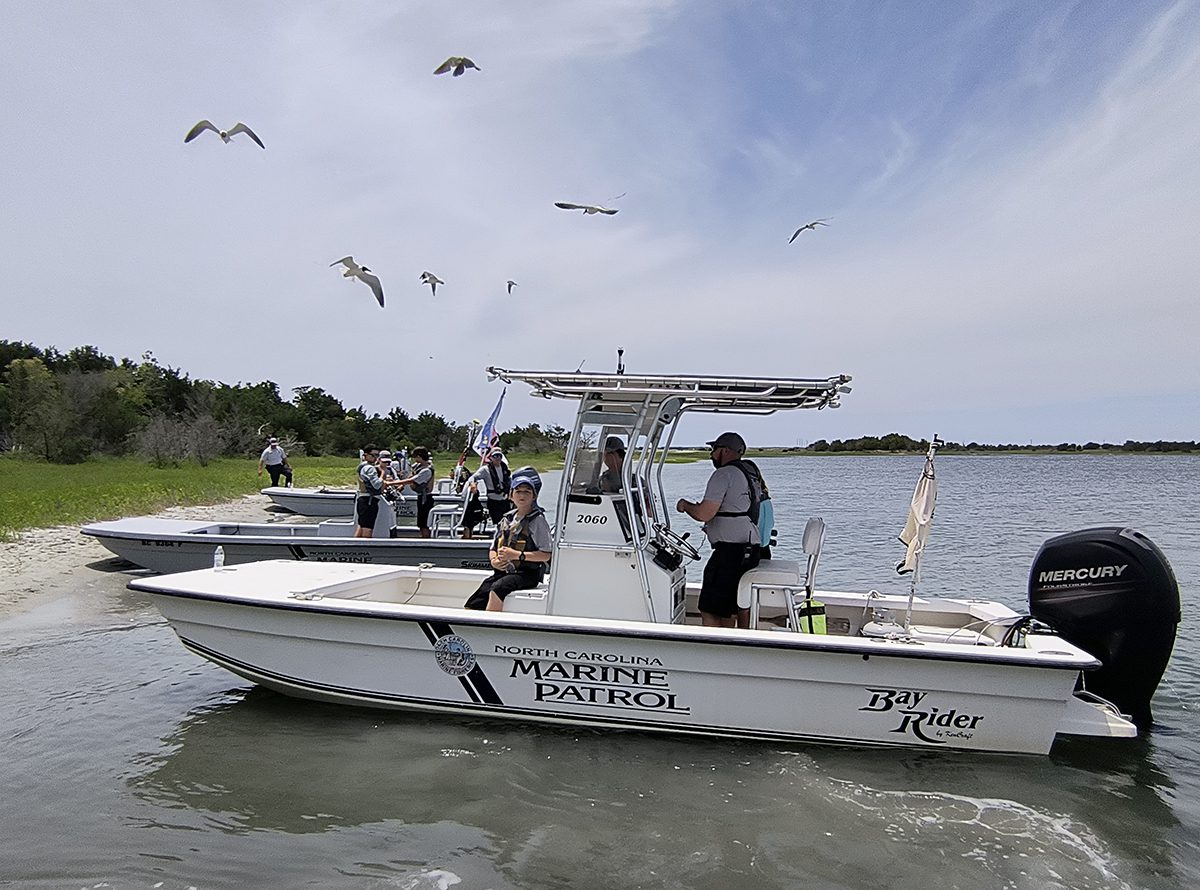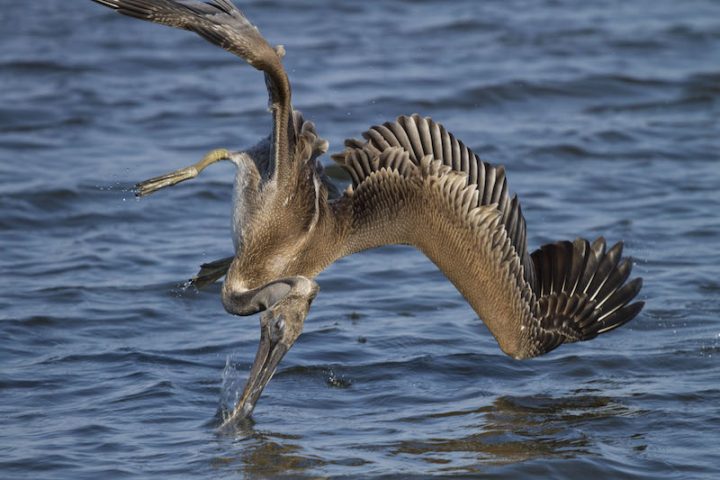
Reprinted from the Outer Banks Voice
OUTER BANKS — We are very fortunate to live in an area that hosts so many fascinating animals. We enjoy dolphins, sea turtles, alligators, black bears, foxes, bobcats, even the occasional manatee — just to name a few.
Sponsor Spotlight
We also have a huge variety of really cool birds. One of the most unique and amazing is the brown pelican.
The brown pelican is a large water bird with an oversized bill, long neck, webbed feet and a large, gray-brown body.
Immature birds are darker than adults, appearing chocolate-brown all over. As large as they might seem, with a length of around 48 inches and a wingspan of 84 inches, brown pelicans are the smallest of the eight pelican species on earth.
Their bizarre bills are characterized by a wicked, down-curved hook on the end of the upper mandible and a large, expandable throat pouch – like a beach ball – underneath. Pelicans are elegant, masterful fliers, plunge-dive like an Olympian, are great swimmers, with their big, webbed feet, yet appear rather awkward, even comical, when standing or walking on land.
Sponsor Spotlight
Brown pelicans live here year-round in our coastal marine habitats. They are easily seen over the ocean, in the inlets and in the sounds. But don’t take them for granted — it was not always that way.
Habitat destruction and especially pesticides nearly eliminated brown pelicans from North America in the 1960s and early 1970s.
The pesticide Endrin was killing the birds outright and DDT was causing the egg shells to become too thin to be incubated: They simply broke under the weight of the pelican. Through enormous conservation efforts, including the banning of DDT, brown pelicans gradually recovered and are common now.
Along our coast, synchronized squadrons of brown pelicans can be seen as they head to and from their fishing grounds, gliding above the surf, rising and falling to stay just above the waves.
They use a phenomenon known as “ground effect” to reduce drag and increase lift. As the air flows between their wings and the surface of the ocean, it is compressed and exerts an upward force on the pelican, providing lift and saving energy.
In addition, the formations in which the pelicans fly reduce wind drag on all but the lead bird, again making it easier to fly. At times, you may even see pelicans soaring high in the sky, like vultures. They are riding thermals, heat rising from the earth, to give them lift, again saving precious energy.
A brown pelican eats mostly menhaden, mullet and other small fish that form schools near the surface of the water.
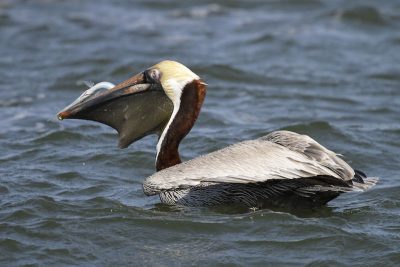
It feeds by diving into the water head-first, sometimes from as high as 50 or 60 feet. During a dive, it tucks its head and rotates its body to the left to protect, or cushion, the right side of the neck, where the trachea and esophagus are located. When the bird hits the water, the pouch expands to help trap the fish.
Once the fish is captured, the pelican comes up and drains the water, about 2.5 gallons, from its pouch. It is at this point that gulls will sometimes try to steal the fish right from the pouch. They will even boldly stand on the pelican’s back or head.
Brown pelicans occasionally feed by sitting on the surface and seizing prey with their bills, like other pelican species, usually when a dense school of fish is close to the surface and the water is too shallow and muddy to plunge. They also steal food from other seabirds, scavenge dead animals and eat invertebrates such as shrimp. They can also become acclimated to humans and will hang out around fishing boats and piers, begging for handouts.
Pelicans stay water-resistant by coating their feathers with an oily secretion from preen glands located on the backs of their heads.
In late winter, as breeding season approaches, the back of the neck molts into a dark brown and the top of the head turns a bright yellow.

Pelicans breed in colonies in our sounds — usually on small islands where they are free from terrestrial predators.
The male locates and defends a potential nest site and perches nearby for up to three weeks, performing a head-swaying routine until he attracts a mate. Pelican nests, made of sticks and lined with grasses and seaweed, are built on the ground or in shrubs or trees.
The more experienced birds build on higher ground than do the rookies. The males bring the materials and the females construct the nests. Once the eggs, typically one to three, have been laid, the parents incubate — with their feet. If suddenly disturbed, pelicans may fly hastily, sometimes crushing their eggs, so it is important to stay away from nesting colonies.
Once the young have hatched, both adult pelicans regurgitate semi-digested fish onto the nest floor, later switching to fresh fish once the young are large enough. The young can fly and fend for themselves after about three months, but it takes three to five years to reach sexual maturity.
Brown pelicans are basically quiet birds but will make grunting sounds when at the breeding colony. The chicks are generally very noisy, and if you ever approach a nest, the young birds will lunge and snap at you.
Although the brown pelican story is a happy one, they still face threats, from habitat degradation to pollution to sea-level rise to entanglement in fishing gear and, on the Gulf Coast, oil spills.
Other Shorebirds
In addition to pelicans, coastal birders in June can find a good variety of terns, most of them nesting. Shorebirds will be present in small numbers until they begin to return in July from the breeding grounds. Egrets and herons are nesting as well, and when seen are usually busily catching prey to feed their young. Osprey should be feeding young, as well.
In the woods it’s the same story. The songbirds are feeding young, whether they are warblers, wrens or woodpeckers. This includes your backyard, where the cardinals, mockingbirds, brown thrashers, mourning doves and chickadees are all busy with new families. You can help them out by providing suet and clean water.
Learn More
This story is provided courtesy of the Outer Banks Voice, a digital newspaper covering the Outer Banks. Coastal Review Online is partnering with the Voice to provide readers with more environmental and lifestyle stories of interest about our coast. You can read other stories about the Outer Banks here.



